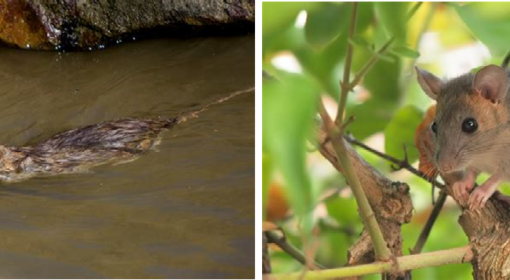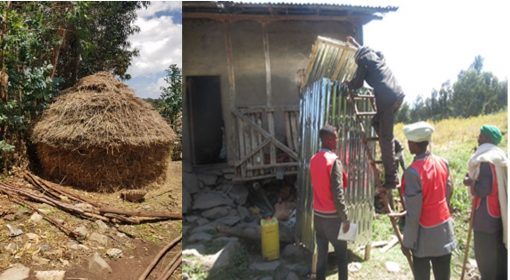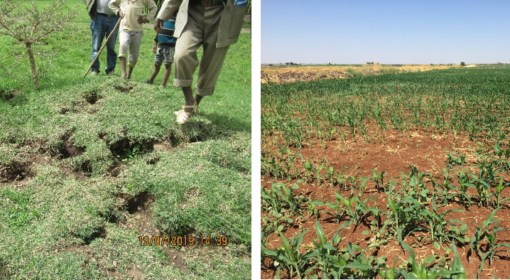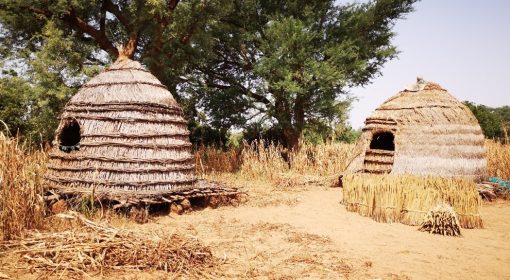By Tadesse Tilahun, Getachew Engdayehu, Bantamlak Wondmnow, and Luwieke Bosma
This is the first in a series of blog posts describing the development and implementation of ecologically-based rodent management (EBRM) in Ethiopia. It describes the realization of the joint approach between farming communities, MetaMeta, and the Amhara Bureau of Agriculture in implementing EBRM with the support of RVO-SBIR and Green Future Farming supported by the Ikea Foundation.
Rodents are a major but often unseen problem in food systems, typically causing 10-20% crop loss in the field and storage[1]. In Ethiopia, rodents are responsible for an estimated 25% crop loss, which results in a yearly loss of up to 2.5 billion US dollars in agricultural value. As 73% of the Ethiopian population is employed in the farming sector, this affects many people in terms of food security – especially coming down hard on small and marginal farmers. Furthermore, rodents threaten village health as they spread diseases and viruses, and can contaminate food sources[2].
Despite these severe problems that rodents cause, the situation remained largely neglected. Even though Ethiopian communities have struggled with rodent pests and outbreaks for decades, the problem received very little attention. Over time the problem did not diminish but appeared to have worsened. One of the reasons was rather unexpected– recent watershed rehabilitation programs. While these programmes successfully restored landscapes, they also increased the rodent populations. The water conservation structures (e.g., stone bunds and terraces) and change in cropping calendars provided ample shelter and food to rodents[3], which vastly increased rodent population numbers and sent alarm bells ringing in farms across Ethiopia.
Through the extension workers at kebele and woreda levels, MetaMeta and the Amhara Bureau of Agriculture got involved in rodent management and discovered the huge gap in terms of alternative biological and ecological methods for small-holder farmers worldwide. Developing a systematic, communal, and ecologically based approach to this severe rodent issue thus had to start from the ground up. This entailed first engaging with farmers and communities to understand the extent of the problem and combining their indigenous knowledge with scientific research to work towards a sustainable solution.
In the first year, a survey was conducted amongst farmers in the highlands of Amhara to collect farmers’ knowledge, perspective, and practices on rodent management. The aim was to get to know farmers’ attitudes and understandings on the rodent issue, extent of damage, and their experiences with botanical and other rodent control methods currently used in their locality. Two hundred household farmers and 52 woreda and kebele experts were consulted during interviews and focus group discussions.
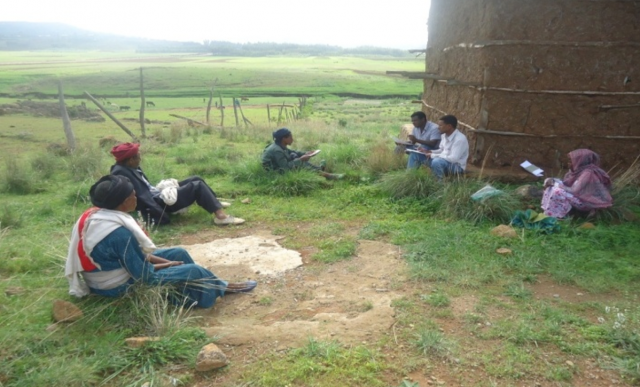
Some indigenous rodent management methods used included plugging rat burrows with stones and toxic plants, flooding and smoking out the tunnels, using stone traps, and fencing with thorny/prickly plants around holes. A combination of methods is also used. In addition, farmers know of botanicals that they suspect affect rodents, either through repulsive smells or by inducing mild toxic effects. All rodent control methods had been applied at a few locations and, at best, one by one. None of the methods were practiced collectively at a community-level. As a result, control on a larger scale at the rodents’ habitat did not happen, and the damage continued to rise.
This local knowledge was collected and combined with academic research in different parts of the world, forming the basis and road map to develop a practical collective EBRM approach. Starting the following year, experience-sharing and training workshops were held twice a year for regional, zonal, woreda, and kebele-level agricultural experts, community leaders, and select farmers (women and men). To date, more than 1000 participants have attended the workshops. The primary objectives of these workshops and trainings were to raise awareness, prepare action plans for collective community-level EBRM, share and learn from best practices, and apply bio-rodenticides as a ready product. Participants shared their valuable indigenous knowledge and experiences about rats’ behaviour, breeding seasons, habitat utilization, and population dynamics. This was the basis for developing local EBRM action plans – combining habitat control: denying access to food, intercepting rat pathways, removing shelters, promoting predator action, and selective trapping and killing. Participants discuss what they know and traditionally do to control rats, and they also suggest ways to incorporate rodent management as an integral part of watershed development. The fact that the watershed community made the EBRM activities part of their collective work was critical to the success of EBRM in the area.
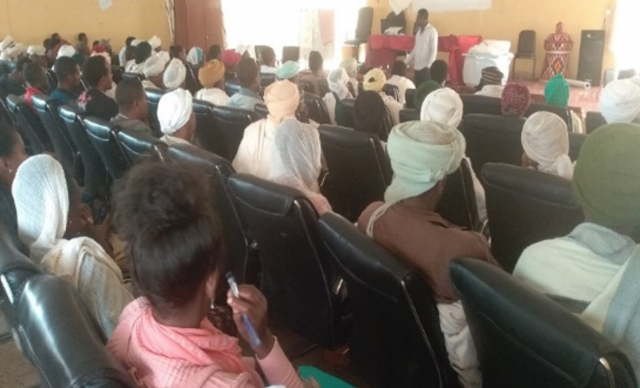
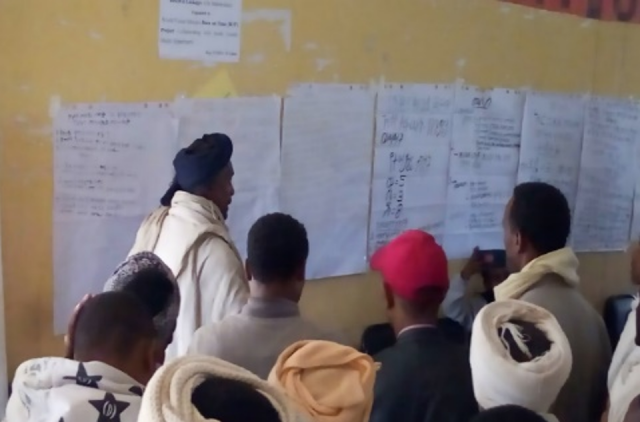
The field assessments, together with the workshops and experience sharing sessions, highlight the importance of first getting a deep understanding of the problem and then finding a sustainable solution by combining indigenous knowledge with scientific research. This has led to a comprehensive EBRM approach, including an EBRM manual, different implementation manuals, bio-rodenticide product preparations, and field application procedure protocols. The EBRM manual includes all EBRM methods and innovative and effective bio-rodenticide application methods. It contains farmers’ shared, collated indigenous knowledge and special measures such as community-based trap barrier systems (TBS) in crop fields. Many EBRM manuals were printed and successfully distributed to watershed user associations (WUAs). In addition, the scientific protocols and procedures that used to be followed in preparing and applying bio-rodenticide products were prepared and utilized throughout all field trials.
The organized EBRM approach in the region thus originated from the farmer’s extensive indigenous knowledge of rodent management, combined with the scientific expertise of new botanical rodent control prototypes. Also, the shift from individual to collective management is an essential factor in the success of EBRM. This way, EBRM can be used to increase food security in Amhara and other regions of Ethiopia, and will be a promising possibility to be systematically implemented in other (African) countries. The following blog will dive deeper into the development of the bio-rodenticide, and the third blog will elaborate more on the collective approach.
Do you want to know more? Contact Luwieke (lbosma@metameta.nl) or have a look at www.rodentgreen.com

[1] Yonas, M., Ashenafi, F., Kidane, D., & Welegerima, K. (2021). Stored-grain losses and management practices among smallholder cereal farmers in Northern Ethiopia. International Journal of Pest Management, 68(1), 59-68.
[2] See also this podcast episode and this blog from Dr. Meheretu Yonas, providing a complete overview of the scale and relevance of the problem.
[3] Meheretu, Y., Sluydts, V., Welegerima, K., Bauer, H., Teferi, M., Yirga, G., … & Leirs, H. (2014). Rodent abundance, stone bund density and its effects on crop damage in the Tigray highlands, Ethiopia. Crop Protection, 55, 61-67.
